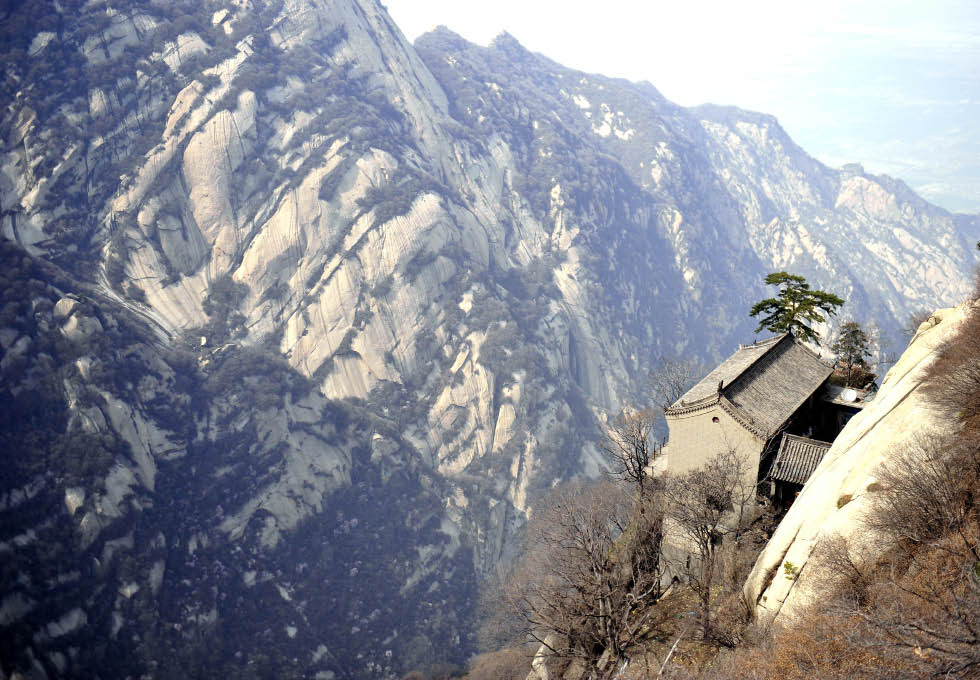Bill Porter: American Follower of Chinese Zen
By staff reporter JIAO FENG
 |
| Zhongnan Mountain, an ideal setting for internal reflection. |
HAVING spent a decade in Taiwan practicing Chinese Zen, one of the major sects of Buddhism, and writing and translating books introducing Zen to Western readers, American Bill Porter came to China’s mainland in the 1980s in search of the few living Zen hermits.
The book that his travels produced, Road to Heaven: Encounters with Chinese Hermits, was first published in 1993 and again in 2009. It introduced its American and European, and even many Chinese, readers to the modern hermits residing in the Zhongnan Mountains and aroused Western interest in traditional Chinese culture.
The Zen of Watermelon
To Porter, it was fate that brought him to Chinese Zen. At the start of the 1970s, despite little special interest or background in China studies, Porter chose to study the Chinese language for its relative ease of securing a scholarship along with anthropology at Columbia University. Once he began to explore the world of Chinese culture, however, he found it to be full of fascinating treasures. By chance one day he opened a book about Buddhist Zen, and was struck by how resonant and sensible he found the principles it laid out.
Porter met his first Chinese master, Monk Shouye, in New York City. On the first day of their acquaintance he was astounded to see that the master’s copy of the Avatamsaka Sutra had been written in his own blood. On the second day, Porter decided to convert to Buddhism under Monk Shouye’s tutelage. Monk Shouye could say only one English word – watermelon – so Porter would quip that his was the Zen of watermelon.
“My encounter with the master was what the Chinese called ‘yuanfen,’ or predetermined destiny,” Porter said. “He taught me to sit in meditation and practice Buddhism. Eventually I learnt that this practice was more important than getting a Ph.D.” Though the language barrier made it difficult for the two to communicate, Porter developed a deep and profound respect for his master’s attitude towards life. Two years later, Porter gave up his Ph.D. scholarship and started the life dedicated to practicing Buddhism in Taiwan.
After a short sojourn at Taiwan’s largest Buddhist monastery Fo Guang Shan, he transferred to Hai-Ming Temple close to Taipei in 1972. The Zen approach to Buddhism advocates finding enlightenment from within through self-cultivation, playing down the importance of following every Buddhist ritual. It believes the practitioner can gain religious insights not only through meditation and chanting the sutras, but also in the course of going through the banalities of everyday life, such as fetching water, sweeping floors, and even eating and sleeping. Disciples are usually left to discover Buddhist insights by themselves, and their learned teacher only provides guidance, if needed, when they reach perplexing turning points in their spiritual lives.
Porter was thus left alone to find his own way and received little direction from his master. Life at the monastery was simple. He got up before dawn to chant, and in the evening listened to the bells. The material concerns he had to deal with during his time there were basic – three vegetarian meals a day, a room, a bed, a mosquito net, and no bills.
“After two and a half years, the abbot asked me if I wanted to be a monk,” Porter recalled. “I felt embarrassed as I had lived and eaten for free there for such a long time. But I had met the girl who would later become my wife, so I didn’t want to be a monk. Then I left.”

